History originally published in AutoWeek February 28, 1985
Idling on the gravel drive, it’s utterly Palladian radiator reflecting the lowering rays the autumn sun, the Lancia Lambda hides surprisingly modern ideas and innovative concepts beneath its classic form. Independent front suspension was rare enough in the ‘20s, but unit body construction – almost universal today – was an exclusive, a Lancia patent. And the narrow vee engine, with its single overhead cam in a single head, would become a Lancia trademark, never duplicated anywhere despite thousands being made by Lancia.
History is generally not kind to automotive innovations, but the Lambda, with these three major new features, not only survived but prospered. Between its introduction in 1922 and succession in 1931 by a new generation of Lancias, more than 13,000 Lambdas were made.
Vincenzo Lancia began building cars under his own name in 1906 at age 25, while still racing giant FIATs (the acronym was as yet written in all caps), a preoccupation that saved the Turin native from a life of accountancy. It’s probably good that Lancia was bored with accounting, for his creativity applied to bookkeeping would surely have led to trouble. Rather, it was applied to his automobiles. Even the first car, the relatively conventional Alfa (no relation to the Alfa Romeo, the model designation deriving from the Italian spelling of the Greek alphabet, a tradition followed through the Lambda) had a Lancia-designed two-stage carburetor, the first such in the world, and an oil pump.
Though Lancia was to stay with in-line engines for the first 15 years, he experimented with a variety of valve train configurations and accessories. He also began his exploration of the vee engine. Though deDion Boutan in 1910 and Cadillac in 1914 had beaten him to production, Lancia patented the even-fire 60-degree V-eight, the novelty being crank throws offset by 30 degrees. It was the beginning of a long infatuation with a narrow vee engine.
One of the mysteries of automotive history was selection of the vee angle in Lancia’s engines, as he would use a variety. From “normal” 60-, 45-, and 30-degree vees, Lancia went to a very narrow 22 degrees for a 6,032cc V-12 in 1919. Though the twelve itself never became anything but experimental, it was to become the father of Lancia’s later vees, appearing first in V-8 form in the Trikappa of 1922 and then in V-4 form in the Lambda later that year.
It was Lambda with its unit body construction and independent front suspension that set the trend for the future. It is Official Lancia Legend that Lancia got the idea for the unit body while on a boat trip, inspired by the steel hull which by all reason should have been stiffer than the double rail frames commonly in use at the time. Though patent drawings had no doors, the production Lambda did, and in fact did not have a complete steel hull but rather a 2mm-thick pressed sheet-metal skeleton with cutouts for the doors and engine bay. A true monocoque, the high side panels were covered only by a thin sheet metal. No structural wood was used, unusual for the time. Torsional rigidity was paramount, and to this end the chassis was well crossed-braced with the driveshaft tunnel acting as a backbone. And it worked.
The Independent front suspension Is the subject of Another Legend. The story has it that Lancia was driving his mother in a Kappa when one of the front springs broke, leaving the beam axle car with no directional control. Though no one was injured in the incident, Lancia set about to develop a safer front suspension. What he devised was a sliding pillar design, rigidly set into a trapezoidal framework integrated into the front of the monocoque. Trailing arms provided fore and aft location. Both coil springs (of square section) and hydraulic shocks were contained within the vertical tubes of the suspension member. Tall, lightweight wire wheels not only contributed to a low unsprung weight, but complemented the cars lithe and airy profile.
Cable-actuated brakes with big, cast-iron 11.8-inch drums combined with wheel hubs were fitted fore and aft, though Lancia had to be convinced of the need for front-wheel brakes on a specially equipped prototype which allowed the former race driver to sample the results.
The four-cylinder engine owed much to the experimental V-12 and the Trikappa V-8, though the vee angle shrunk yet again to only 13 degrees. Like the other engines, however, the Lambda four had a single cast-iron cylinder head with a flat mounting surface across the block. The single cam resided in the head and operated vertical valves through rocker arms. Spark plugs were in the block, projecting into the side of the wedge-shaped combustion chamber formed by the flat-top piston and the flat head.
Intake ran from a Zenith carburetor mounted on the rear of the head through an internal “manifold” between the valves. Exhaust manifolding also was integral to the head, running down either side and out the rear. The neoclassical architecture of the body was matched by an almost symmetrical engine. The block and crankcase were aluminum with cast-iron cylinders, the crank running in three main bearings and driving the camshaft via a vertical shaft. Power output of the 2120cc engine was 49 HP at a relatively high 3000 RPM. A petite three-speed gearbox, separate from the engine and looking no bigger than a swollen frame member, drove the live rear axle via a two-piece driveshaft.
Lancia made constant improvements to the 1922 design. The second series had changes to the block and big-end bearings, the third added Marelli electrics, new pistons and big, beautiful Zeiss headlamps. The fourth series saw a number of engine changes as well as a change in the valve cover from a rectangular to a more rounded shape. A four-speed gearbox was the most significant change for the fifth series.
Bigger changes came in September 1925, when the body was modified for the sixth series to allow easier installation of coachbuilt bodies on the Lambda chassis, and became even more radical yet when a platform frame was made a part of the seventh series. The seventh series saw the first increase in engine size (to 2370cc) and a change of the engine angle to 14 degrees.
More changes came for the eighth and ninth series. The engine grew again in size and power, to 2570cc and 69 HP at 3500 RPM, and that the angle changed again to 13 degrees, 14 seconds.
Although changes were made throughout the Lambda’s life to make it easier to fit custom bodies, the most popular style was the original, the open “torpedo.” Tom Stewart, from Leesburg, Virginia, owns an all-original fifth-series 1925 Lambda with the torpedo body.
This very unusual Lancia has logged more than 100,000 miles (an odometer malfunction has lost the exact figure) and is wholly unrestored. The red paint has taken on a fine patina, and the leather seats have deteriorated rather badly. The engine runs well, however, and does not have a cracked head; nor has it, since Stewart bought the car in 1975, blown a head gasket, an achievement in itself. Stewart isn’t particularly keen to begin a restoration of the car because, first, it’s only original once, and second, if he starts, well, he’s obligated to finish, and he’d rather drive the car.
The car has a distinctive clatter from what the contemporary British press called its “overhead camshaft.” Probably because the geometry of the valvetrain, the camshaft has enormous lobes, and even after the engine is fully warmed the noise doesn’t go away. Despite even firing, the engine also has its own distinctive vibration that’s foot-numbing to the passenger though not so noticeable from the driver’s seat.
The non-synchro gearbox requires practice even for double-clutch aces. Those of the Synchro Generation will find it a double challenge. It requires a quick and deft hand. He who hesitates is lost – but remember, says Stewart, repair parts for these transmissions are virtually unavailable. Gulp.
What’s remarkable is the road holding. The front suspension holds none of the surprises that a beam axle often springs on a driver, especially over bumps. The leaf-sprung rear axle can be provoked into dancing, but the front and hangs on forever. The Lambda became something of enthusiast’s car, and the excellent handling served it well when a Lambda team competed and finished well in the Mille Miglia of 1927 and 1928.
Lancia’s love affair with innovation and the narrow the engine didn’t stop with the Lambda or even with Vincenzo Lancia’s death in 1937. Sliding pillar suspension and the vee continued well into the postwar era. Even today, with Lancia a part of the giant Fiat combine, the marque is known for unusual and exciting cars. That, we think, would please Vincenzo Lancia very much.







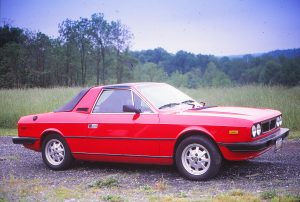
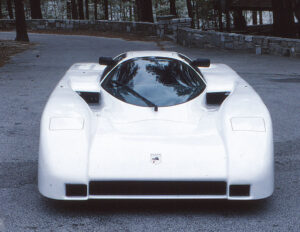
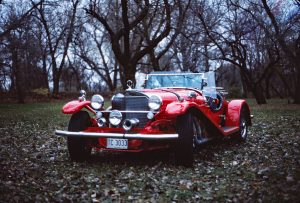
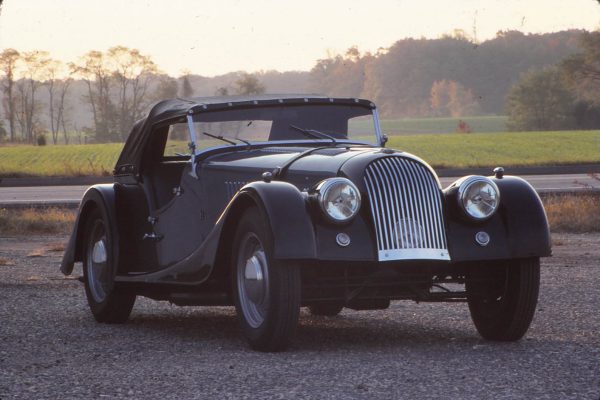
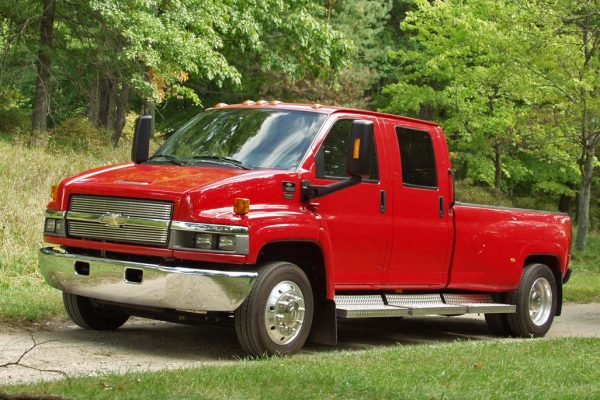
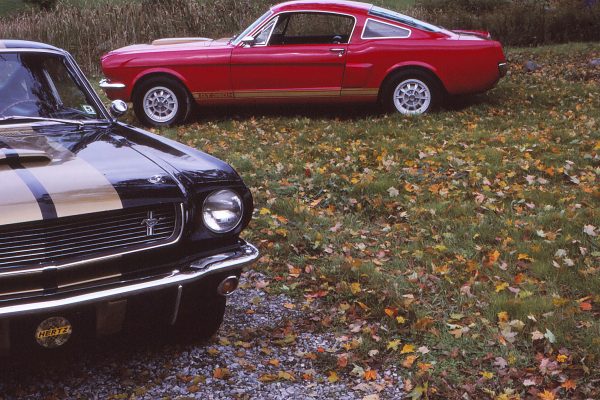
What Do You Think?
You must be logged in to post a comment.